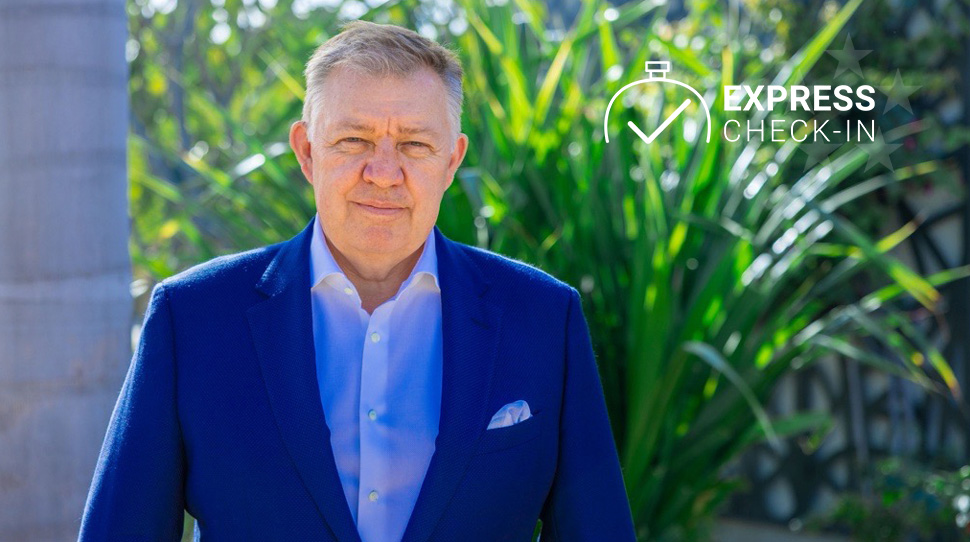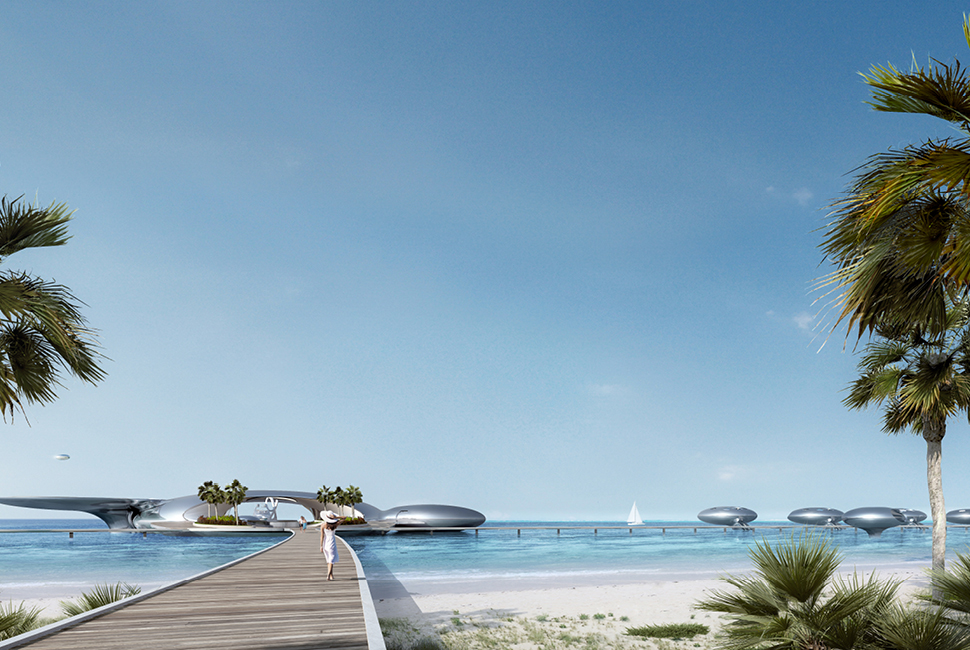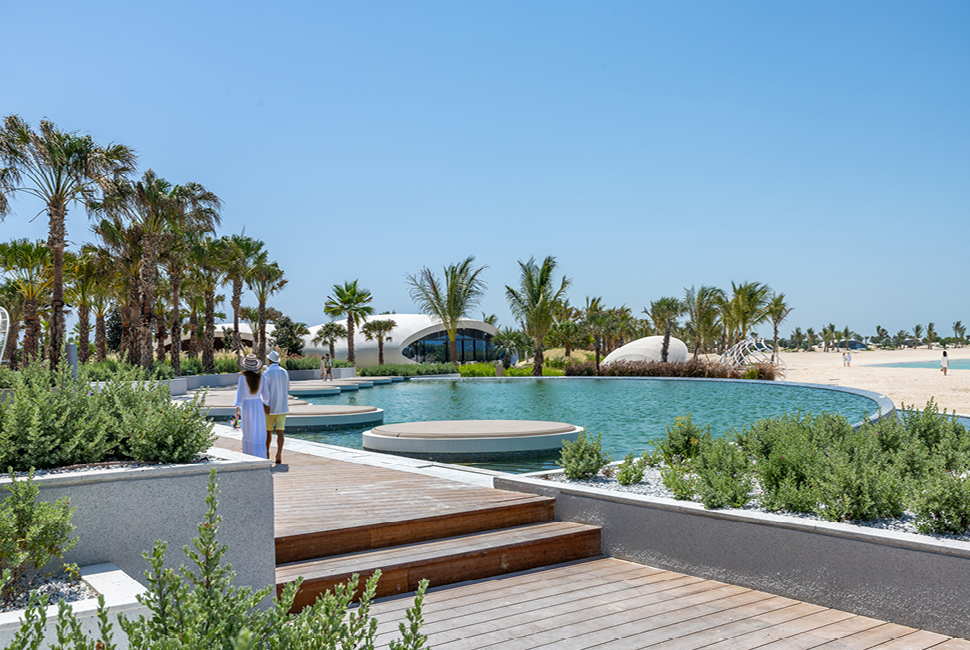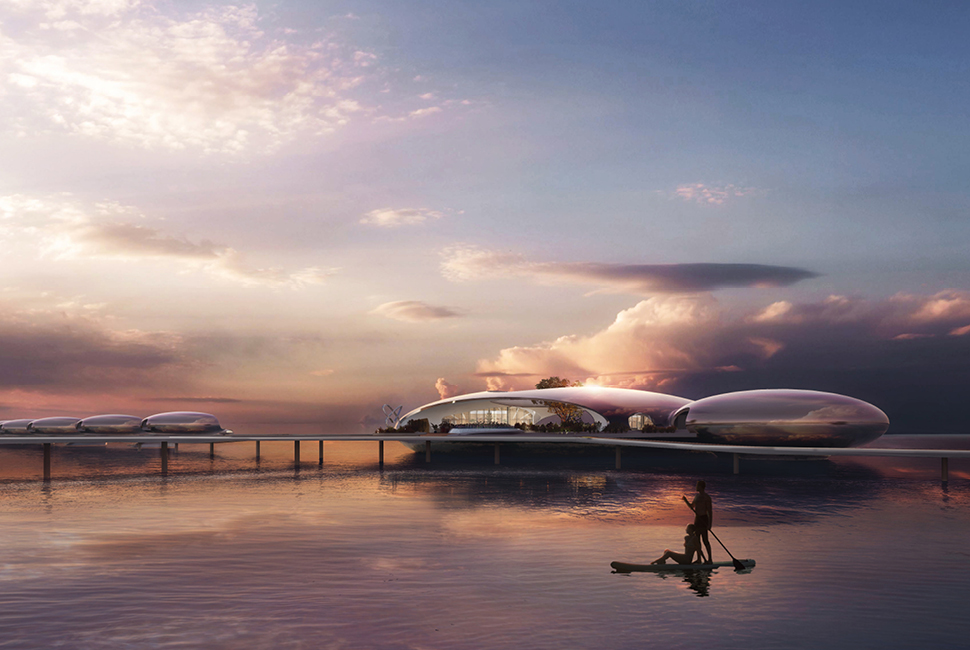

Off the west coast of Saudi Arabia, the Red Sea megaproject is attempting an ambitious feat. The collection of more than 90 undeveloped islands is angling to become a trailblazing new regenerative tourism destination.
While three hotels — The St. Regis Red Sea Resort; Six Senses Southern Dunes, The Red Sea; and Nujuma, a Ritz-Carlton Reserve — have opened, there’s still much to do. The destination plans to have 50 hotels by 2030. Sebastien Carre, Red Sea Global’s (RSG) group head of Hospitality Operations, is helping lead this challenging effort.
“It’s pretty intense,” says Carre, who managed to find time to chat with Forbes Travel Guide amid two hotel pre-openings. But the project is progressing. “Everybody who visits is completely taken aback of what they find,” he says. “I think that a lot of it has to do with the fact that the country is under significant transformation at a very rapid pace, so there’s still apprehensions to traveling to the country, which are not justified. Just go see it for yourself because you will be blown away.”
The 30-year hospitality veteran knows firsthand. Carre’s based in nearby Jeddah, but he spends 80% of his time in the Red Sea location working on openings like the soon-coming Shebara, an RSG-owned and -operated resort that will feature spaceship-like stainless-steel orbs as overwater villas that will be powered solely by the property’s own solar farm. We caught up with Carre to find out what you can expect when visiting this up-and-coming destination.

Why is the Red Sea area special?
There’s a combination of things. Before I joined RSG a year ago, I was with Four Seasons for 20 years, working around the world. We opened the Four Seasons in Bora Bora, for example. I was responsible for the Seychelles and Mauritius [resorts] as a regional vice president, so I’m quite familiar with the seaside island locations. I also worked in Sharm El Sheikh with Four Seasons on the Red Sea on the Egyptian side.
One of the showstoppers with the Red Sea location on the Saudi side is that the whole coastline is absolutely pristine. It is one of the most beautiful places on Earth, and I say this without exaggeration. It’s a side of Saudi that is basically not developed. So, you have nature and its pristine state, which is now anchoring beautiful resorts, which are done with no expenses spared on how they are designed. And the architecture ambition is enormous.
The coral is at a level of preservation that is unique in the world. Scientists are doing research to find out why here in the Red Sea the coral is not bleaching as it does elsewhere with the hope that some discoveries are going to help preserve coral barriers in places where it’s more affected.
Some of the assets that we are working on pre-opening right now are just iconic. They are global-first destination definers. And so that’s some of the reason [it’s special].
But one that is even more important is the very strong tradition of generous hospitality that is embedded in this culture, and this something that is a million years old. It finds its foundations in the pilgrimage routes, especially on the west coast of Saudi Arabia — as you know, we’re not that far from Mecca and Medina, which for thousands of years have been welcoming pilgrims from all over the world for religious tourism and attending hajj. It’s been the roots that bring people from Africa, from the northern side of the Mediterranean and the eastern side of Central Asia and so on; it has been a blend of culture traveling through the kingdom for many years.
The local culture has in its DNA some of the best hospitality that I’ve seen around the world — genuine and natural. What the kingdom is doing right now — and this is what’s attracting many of us in luxury tourism — is that you have incredible ingredients here to create, I think, a small revolution of quality tourism.
One of the things Red Sea Global is very focused on is regenerative tourism, and by that we mean that it’s no longer good enough to preserve the environment as it is. We feel that that we have a paramount duty to do everything we can to improve it. And so, in the coastline where they had limited growth of mangroves, we planted millions of them to contribute to the coastline restoration. In a remote location of Saudi Arabia, where there were very small communities struggling a bit to make ends meet, we’re making sure that the communities are connected to the tourism projects and benefiting from them, and we’re growing those communities as well, in terms of economic development, educational support and so on. We’re heavily involved in educating thousands of students per year to then find employment in our hotels. All of this is also about giving back and leaving the place better than we found it.
It’s a country that is on a very ambitious path of transformation, recently going from a very conservative background to a very fast-paced, very progressive change in society and generational change as well. All that I just described is just supporting this change and materializing the hope that younger generations of Saudis have for their future, and tourism is a big driver of this.
At the same time this is happening, tourism in the country is booming and they have reached their visitor targets 15 years ahead of the initial plan for Vision 2030. It certainly feels like it’s only the very beginning and so much more coming.

You mentioned you’ve experienced some of the best hospitality in your career there. What makes Saudi hospitality different?
The genuine, generous care that people display for one another. I’m not speaking about hotels here, but you will you find it in hotels and restaurants, of course. Someone shared a beautiful story with me the other day: they were driving up the coast about three hours away from where we are and stopped in a gas station to refuel their car. They went to a shop to buy a sandwich and a few cookies with the kids and pick up some water. The person paid the bill and said to the cashier, “Oh, you forgot to charge me for the six bottles of water.” And the cashier said, “Oh, no, we don’t charge for water here. It’s not in our tradition.”
This is a completely unprompted example of what’s called the Saudi hafawah. It’s an Arabic word to describe generous care of complete strangers. When you dig a little bit on the history of all this, it goes as far back as the pilgrims. One of the traditions that is still alive in certain villages is when people are not at home, they leave their door open in case a stranger needs a place to stay.
There’s not a lot of places in the world where you still have things like that happening. In remote villages, it’s very much a tradition. You provide water and food to perfect strangers who are passing by.
Of course, this doesn’t happen in Riyadh and Jeddah. These are very different environments, but the tradition is rooted in this generosity and the care. And this is really what makes the place so different.
What are the best adventures in the Red Sea area?
We have several different things that we are focused on. One company called Galaxea is our own underwater operator. It’s focused on snorkeling, diving, coral regeneration. The underwater marine world is absolutely spectacular, so obviously we are helping visitors to experience it.
And then above the water, we have another company called WAMA, which is doing all the water sports, including the latest trends, like hydrofoils and windSUP [windsurfing and stand-up paddleboarding].
The third one is in the desert. A company called Akun is really about desert trails, discovery mountain walks, natural zoology and safaris in the desert.

Recommend some dishes that offer a nice taste of the location.
There is a tradition of mixed seafood. When the fisherman comes back, whatever he’s got on the boat is cooked, grilled, fried, steamed and served on a giant platter of rice, which has been spiced. And all the food is put in one place, and in the Bedouin tradition, people sit around and eat with their fingers, sharing the same dish. That’s one of the best experiences.
What are the best under-the-radar activities in the Red Sea?
People vacationing on a coastline would expect everything to happen in the water, over the water, on the beach. Here you have a hugely diverse environment. First of all, the mangrove locations are beautiful to visit. You don’t necessarily expect that in resort destinations, and then the desert itself is fascinating. The contrast of the two is what really makes it very special.
What’s a good souvenir to bring home from the Red Sea?
They have some amazing coffee. It’s not coffee as we know it. It’s called Saudi coffee, but it’s actually made of spices, and it’s delicious. It needs to be dried, but you can take it home with you.
